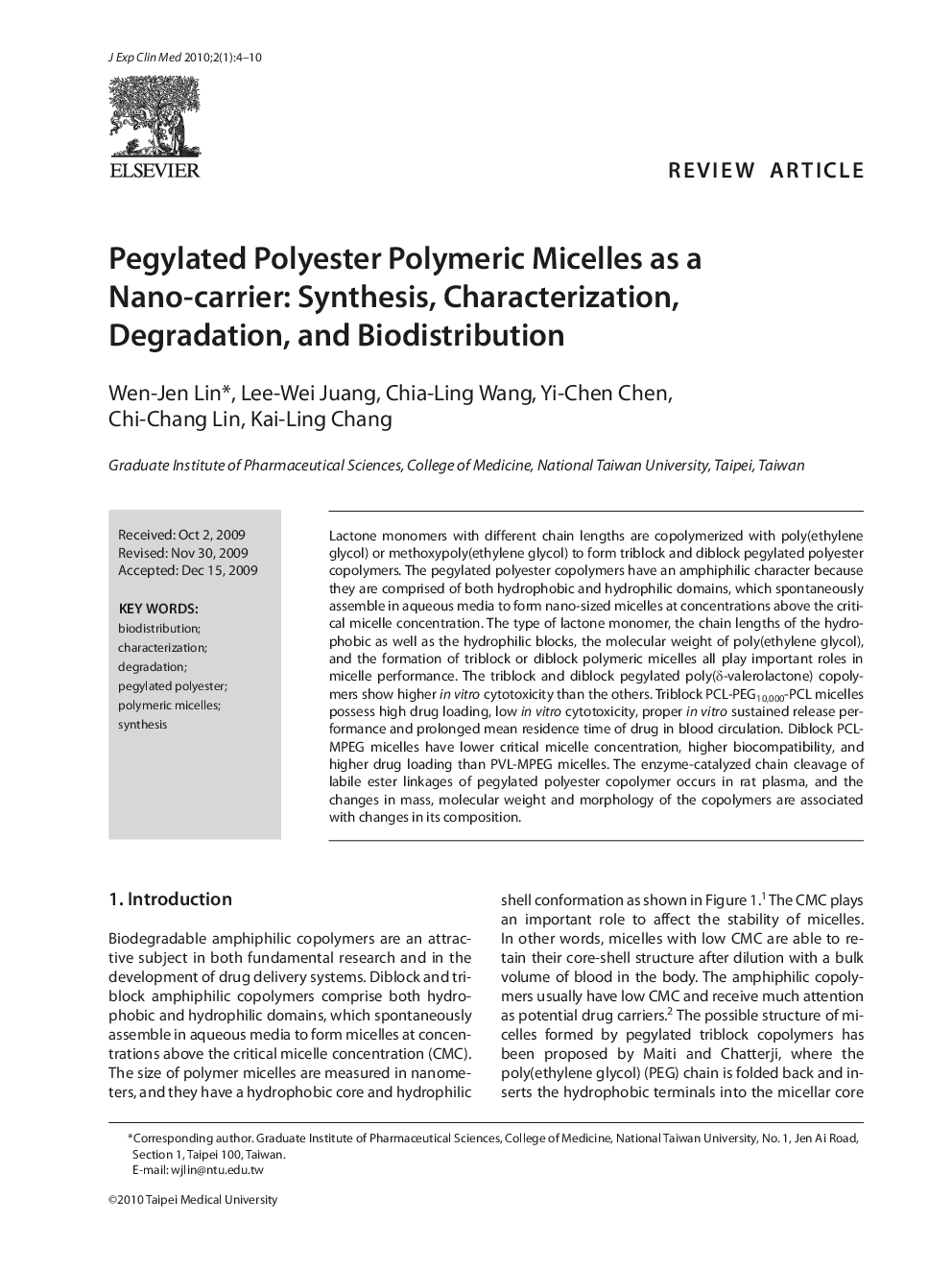| Article ID | Journal | Published Year | Pages | File Type |
|---|---|---|---|---|
| 3478153 | Journal of Experimental & Clinical Medicine | 2010 | 7 Pages |
Lactone monomers with different chain lengths are copolymerized with poly(ethylene glycol) or methoxypoly(ethylene glycol) to form triblock and diblock pegylated polyester copolymers. The pegylated polyester copolymers have an amphiphilic character because they are comprised of both hydrophobic and hydrophilic domains, which spontaneously assemble in aqueous media to form nano-sized micelles at concentrations above the critical micelle concentration. The type of lactone monomer, the chain lengths of the hydrophobic as well as the hydrophilic blocks, the molecular weight of poly(ethylene glycol), and the formation of triblock or diblock polymeric micelles all play important roles in micelle performance. The triblock and diblock pegylated poly(d-valerolactone) copolymers show higher in vitro cytotoxicity than the others. Triblock PCL-PEG10,000-PCL micelles possess high drug loading, low in vitro cytotoxicity, proper in vitro sustained release performance and prolonged mean residence time of drug in blood circulation. Diblock PCLMPEG micelles have lower critical micelle concentration, higher biocompatibility, and higher drug loading than PVL-MPEG micelles. The enzyme-catalyzed chain cleavage of labile ester linkages of pegylated polyester copolymer occurs in rat plasma, and the changes in mass, molecular weight and morphology of the copolymers are associated with changes in its composition.
